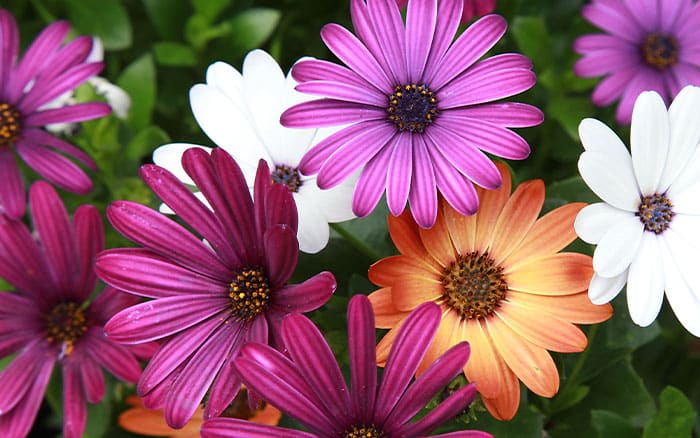Window boxes are a brilliant way to brighten dull house walls. They’re especially helpful if you don’t have a garden.
Choosing the Right Compost for Your Window Box
It’s important to fill your window box with compost that retains moisture but still drains well. Generally, peat-free, general-purpose compost works well for annuals, bedding plants, and herbaceous perennials.
For evergreen shrubs in your window box, use a loam-based compost like John Innes No. 2. This stabilises roots and holds moisture.
Let the compost settle before planting. It usually sinks and may need topping up. Add slow-release fertiliser to the compost before planting. This will feed your plants over a longer period.
How Light Affect Window Boxes: Aspect Matters
Choosing the right plants is the secret to keeping the boxes looking good year-round.
Firstly, you need to check whether the window boxes will be in full sun, part shade, or full shade. This will greatly impact the type of plants you choose for your window box.
Best Plants for Sunny Window Boxes
Many summer-flowering plants thrive in full sun window boxes.
Mix mound-forming plants like osteospermum and erigeron karvinskianus. They’ll gently cascade over the edges and soften the look.
Add upright plants such as ageratum, salvia, and pelargonium for structure.
Include trailing plants like lobelia, ivy, or trailing verbena for a lush, long-lasting summer display.
If watering is difficult, choose drought-tolerant plants. Try amaranthus, plectranthus, and shorter-growing cosmos for a stunning low-maintenance show.
Great Options for Part-Shade Window Boxes


Best Plants for Window Boxes in Full Shade
There are fewer options for full shade, but plenty of beautiful plants still shine in darker spots. Ferns are a natural choice. Pair them with silver-leaved brunnera like ‘Jack Frost’ and coloured busy lizzies.
Heuchera is another fantastic option. It’s evergreen and available in hundreds of varieties with leaf colours from lime to deep purple. Coleus also performs well in shade. Though not winter hardy, they keep going until late autumn with striking leaf patterns.
Match them with trailing ivy or creeping jenny for a simple yet beautiful window box display. Hostas are lovely for their architectural leaves in many greens. However, avoid them if slugs and snails are a problem.
Low-Maintenance Evergreen Window Box Ideas
For a more permanent, lower-maintenance display, choose neat evergreen plants suited to your window’s light level. In sunny spots, try hebe, lavender, or low-growing upright euonymus cultivars. In shade, go for skimmia, ferns, or ornamental grasses like carex.
Once planted, you can easily refresh the display with seasonal flowering additions in summer and autumn.
For more great gardening advice, make sure you head to my YouTube Channel. Make sure you’re subscribed with notifications on so you don’t miss any of my new videos


Leave A Comment